What is nailfold capillaroscopy instrument?
What is nailfold capillaroscopy instrument?
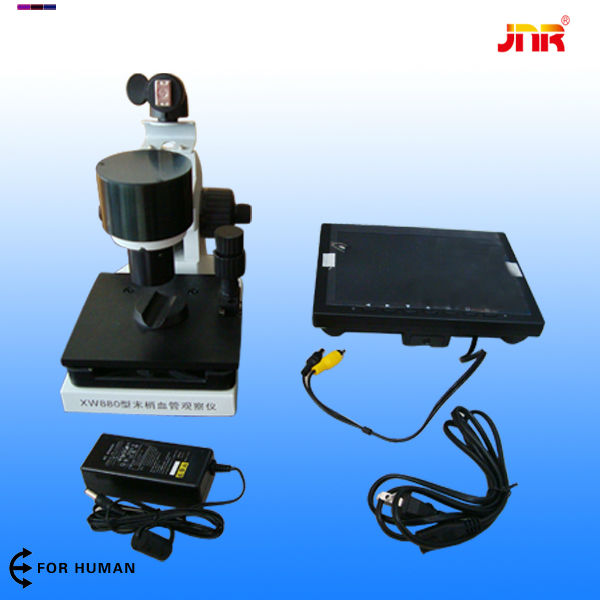
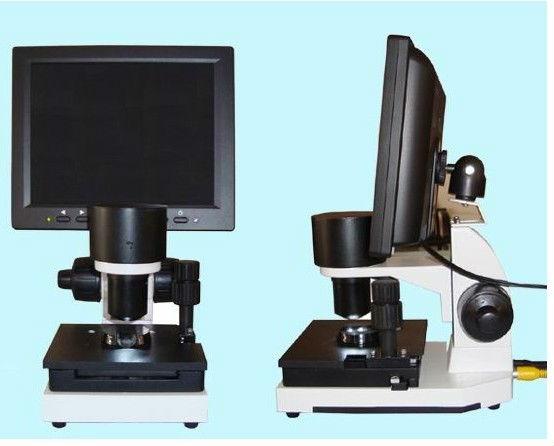
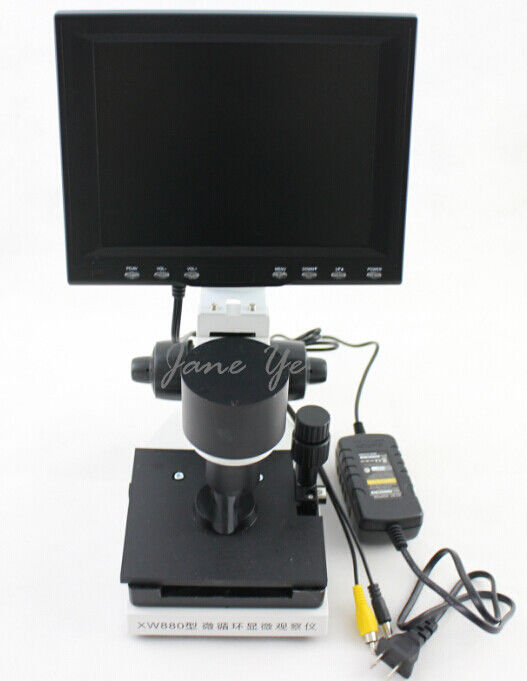
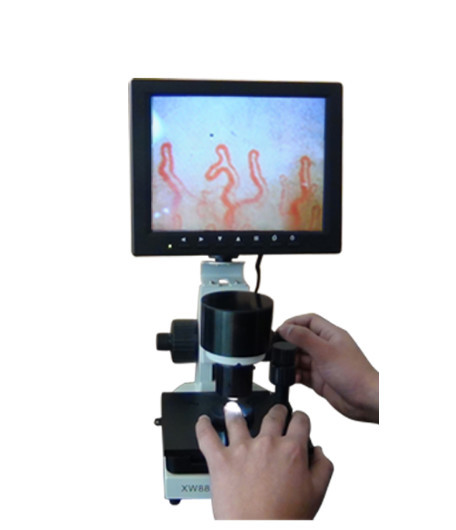
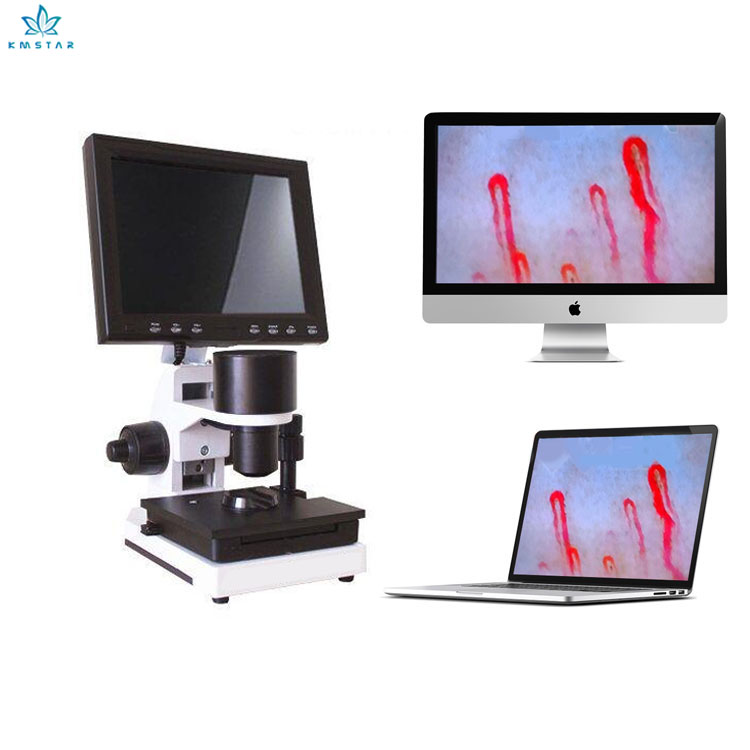
nail fold capillaroscopy advantage
1.in 5 seconds can be observed in the microvascular circulation, simple operation and fast;
2.the microscopic image is stable, clear, do not shake;
3.400 times the microcirculation of a dedicated high-resolution lens of the microscope;
4.handheld ultra-light design, so that the observation of more mobility;
5.with micro-focus wheel, free to adjust the focus length, the use of more convenience
6.lens built-in LED cold light source, accurate projection illumination on an object;
7.using non-invasive way, to observe the microcirculation of human body in time;
8.observing the microcirculation for any part of human body;
Characteristics:
Color capillaroscope with coaxially conjugated hand wheel for focus adjustment and transverse/longitudinal moving plane table
electronic light source
high resolution color CCD video camera connected with desktop or laptop computer to provide sharp and stable image with perfect color
specialized object lens for capillaroscope with 5 times magnifying power
fine case made of high strength plastic material, wearable and portable.
nail fold capillaroscopy Application Application:
1. nail wall distal microcirculation observation
2. cutaneous distal microcirculation observation
3. tongue microcirculation observation
4.the auricle distal microcirculation observation
5.lips microcirculation observation
6.the other parts of the microcirculation observed
7.sweat glands observed
8.hair follicles observed
9.bamboo charcoal commodity microcirculation efficiency testing
10.far- infrared commodity microcirculation efficiency testing
11. the germanium titanium micro-circulation of goods performance detection
12.ore commodity micro-cycle efficiency detection.
Main System configuration and features:
total magnifying power 380 times
Achromatic objective lens 7 times magnification and 25mm effective working distance
Coaxial conjugate range of rough adjustment 35mm range of fine adjustment 35mm
Coaxial vertical and horizontal movement of the platform vertical movement area 35mm, horizontal movement area 35mm.
electronic light source rated voltage 220V 50Hz mercury lamp 125W, tungsten lamp 250W, fuse tube 5A ,Power of blower fan:18W
Fiber bundle diameter 6mm, length 1000mm, transmittance≥70%.
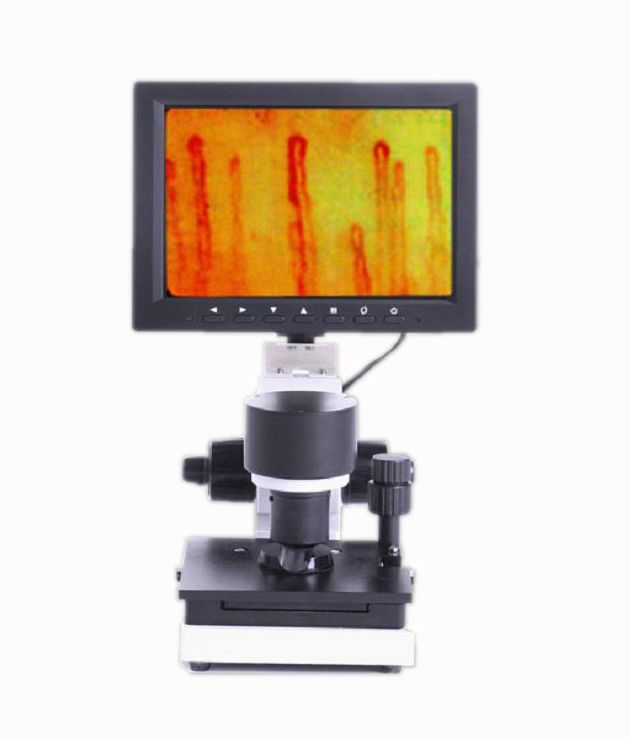
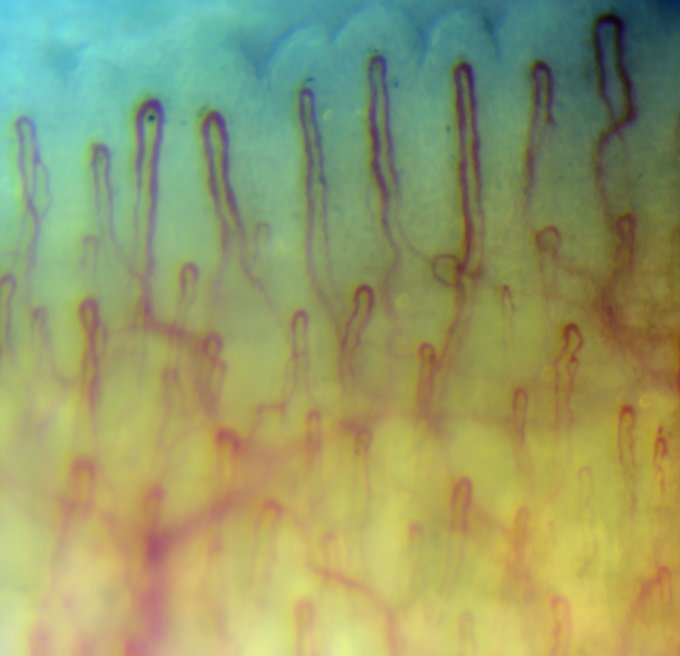
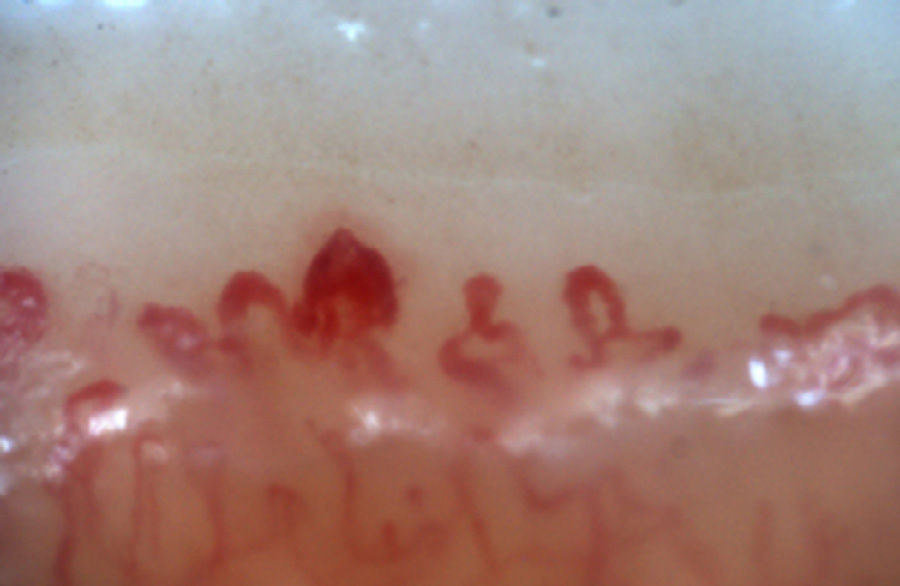
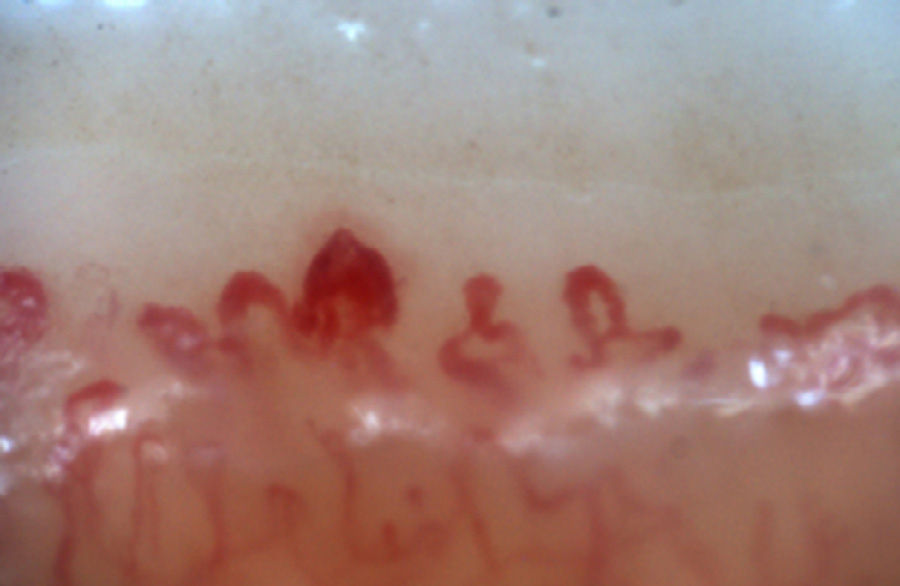
What is Capillaroscopy ?
The capillaroscopy is a non-invasive technique at nailfold level, making it possible to assess the characteristics of the nailfold distal capillaries, thanks to a lens and a light that shines on said spot.
The information it provides us with helps to complete the diagnosis of the vasculitic autoimmune process of the patient; it does not permit a diagnosis or specific therapeutic approach on its own.
For its correct visualisation, the patient is recommended:
Not to wear nail varnish and to avoid external harm (bumps, wounds, nail biting)
Not to smoke in the 2 hours prior to the test
To remain in the a room with a temperature of between 22ºC and 25ºC to avoid vasoconstriction episodes due to exogenous factors.
WHAT ARE ITS USES?
The capillaroscopy allows us to know the extent of the distal vascularisation, which is very important in systemic sclerosis and other connective pathologies, as well as to rule out systemic involvement in patients with Raynaud’s phenomenon with no other associated clinical involvement.
RAYNAUD IS PHENOMENON
The capillaroscopy of the nail bed is a simple, bloodless, economical method which is very useful for studying Raynaud’s phenomenon and other rheumatological conditions. Raynaud’s phenomenon can be defined as the change in the colouring of the fingers and/or toes in response to cold or stress. It traditionally progresses through three stages: paleness (vasospasm), cyanosis (due to increased carboxyhemoglobin) and erythema (reactive hiperemia).
Raynaud’s phenomenon can be primary (Raynaud’s disease) or secondary, associated with a connective tissue disease. Primary Raynaud’s phenomenon is responsible for around 60% of all new cases. 15-20% of cases of Raynaud’s phenomenon are due to a series of non- immunological processes, such as drugs, occupational diseases, neoplasms, etc. The remaining 15-20% are associated with connective tissue diseases.
Raynaud’s is present in over 90% of patients with scleroderma and in 70% of cases it is the first symptom. Although it seems impossible to predict that a patient with Raynaud’s will develop scleroderma, the presence of antinuclear antibodies (ANA) indicates a greater risk of onset.
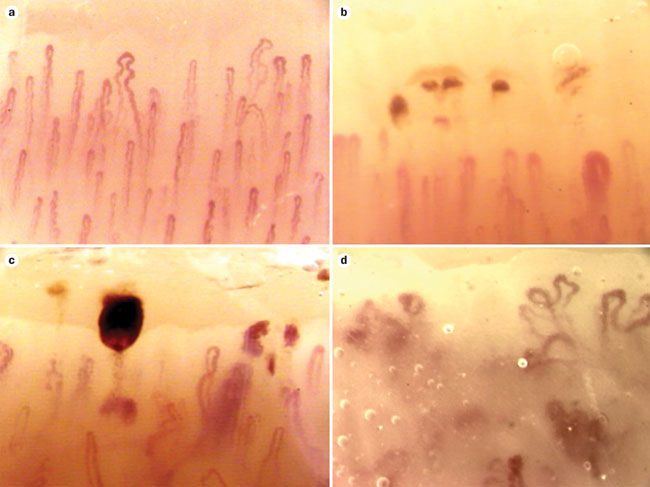
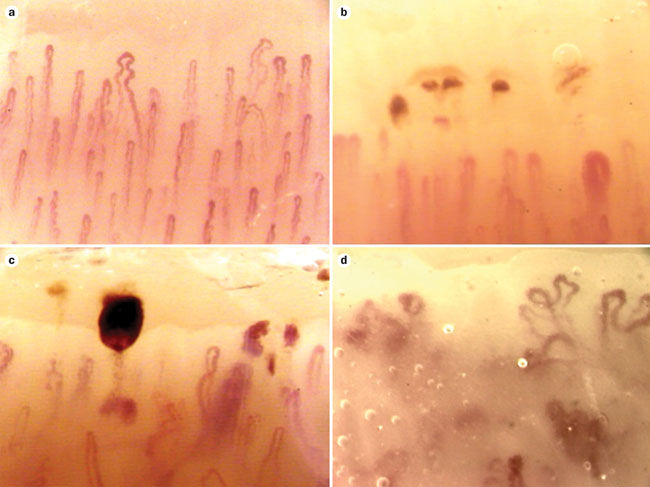
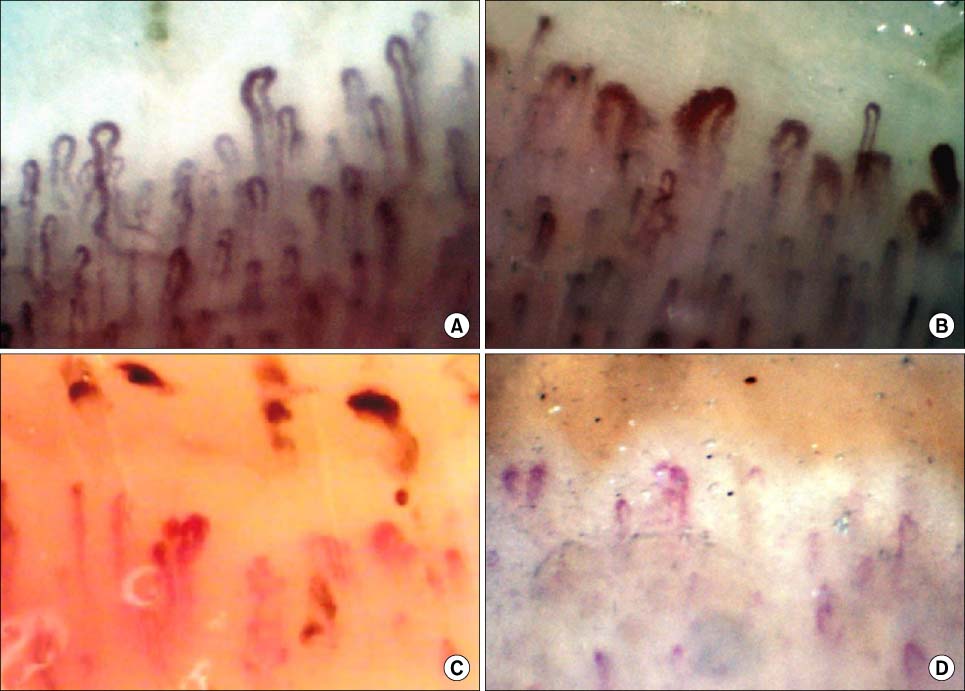
SCLERODERMA
The nail bed capillaroscopy shows morphological alterations at an early stage in some connective tissue diseases of maximum rheumatological interest, particularly capillaroscopy. In these cases, the capillaroscopy traditionally shows the “sclerodermic pattern” characterised by: reduction or absence of capillaries in patches, capillary dilation, and sometimes mega-capillaries and splinter haemorrhages. This “sclerodermic pattern” appears early and when it is observed in patients with Raynaud’s phenomenon, even if it is not very obvious, it should lead to the search for sclerodermic manifestations in internal organs, which can be present without causing any symptoms. The combination of Raynaud’s phenomenon and a “sclerodermic pattern” in a capillaroscopy can precede and therefore predict the onset of scleroderma.
CAPILLAROSCOPY AND RHEUMATOLOGICAL CONDITIONS
In dermatomyositis, the capillaroscopy is similar and sometimes indistinguishable from that found in scleroderma. These patients generally present the other clinical, enzymatic or electromyographic manifestations of dermatomyositis that enable its recognition and diagnosis.
In mixed connective tissue disease (MCTD) or overlap syndromes that a sclerodermic component, the findings of the capillaroscopy can be similar although rarely are large capillary dilations and mega-capillaries observed. These capillaroscopies must be analysed by an expert.
In systemic lupus erythematosus, the alterations in the capillaroscopy are non-specific, and it is possible to find focal capillary reduction, albeit not very strong. The capillaries can be somewhat dilated and tortuous, sometimes with criss-crossing of the arterial and venous components (ringlets), the latter being the most characteristic finding in the capillaroscopy.
In primary Raynaud’s phenomenon, the most striking characteristic is the elongated capillaries with undulations throughout the arterial and venous components. Little or no reduction or dilation of the capillaries can be observed. Splinter haemorrhages are scarce and small.
Ultimately, this is an auxiliary diagnostic technique with great value in rheumatology and vascular disease.
nailfold capillaroscopy instrument
nailfold capillaroscopy pictures and what nailfold capillaroscopy?
what is nail fold vasculature capillaroscopy?
microcirculation microscope definition what and why it?
What is microcirculation microscope?
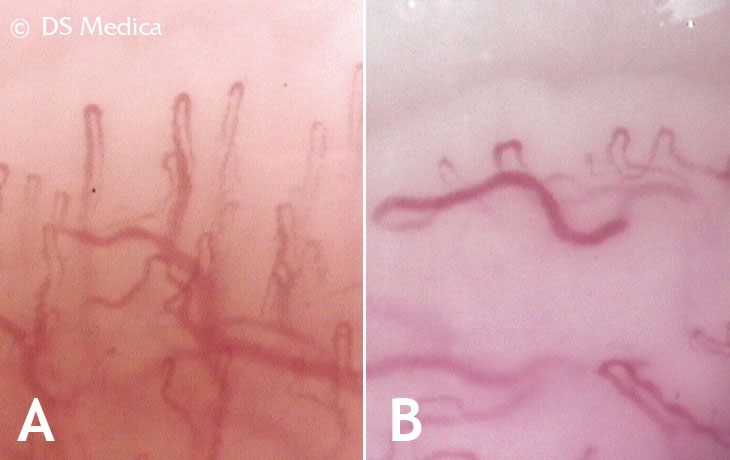
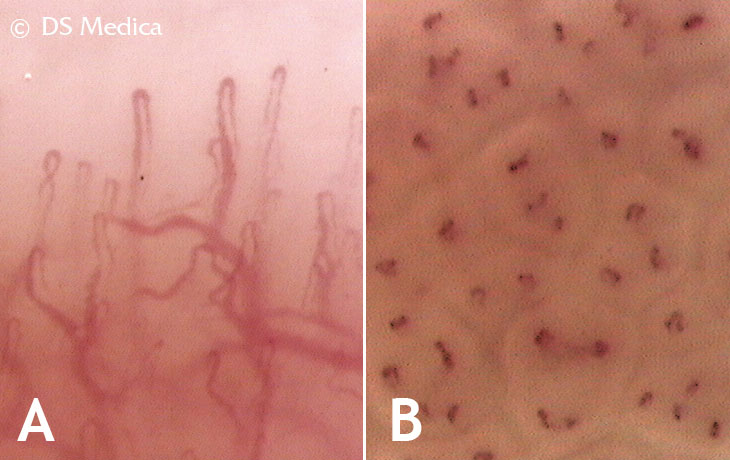
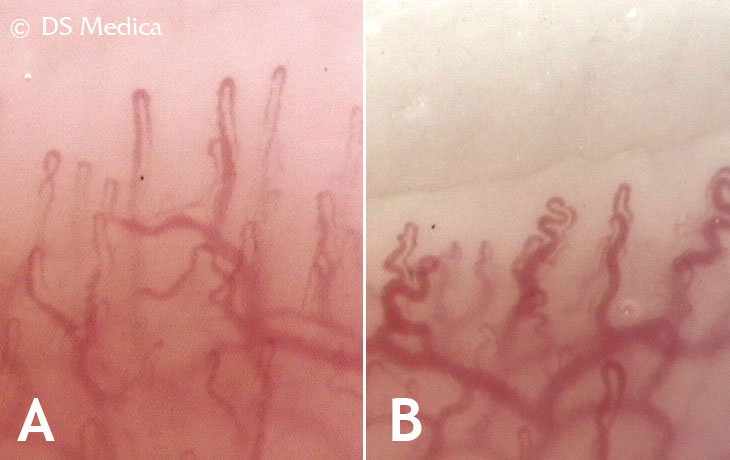
what can do by nail fold capillaroscopy?
Clinical capillaroscopy for Raynaud phenomenon, rheumatic diseases.Nailfold capillaroscope,Our Nailfold Capillaroscope is the First Brand in China,Our Customers are all over the world,Capillaroscopy is a widely used technique for the examination of patients suffering from rheumatic and cardiovascular diseases, endocrine disorders, metabolic diseases, some diseases of respiratory organs,inflammatory processes and trophic disturbances and pathologies of the skin and of the hypoderm.Videocapillaroscopy is also a reliable tool in the diagnosis of angiopathies in patients suffering from pancreatic diabetes.
Nailfold videocapillaroscopy finds application in the fields of:
Rheumatology (autoimmune diseases, Raynaud’s disease, rheumatoid arthritis, sclerodermia related pathologies, systemic lupus erythematosus).
Dermatology(naevi, dermatitis, dermatosis, psoriasis, skin cancer and amartomes, non healing wounds).
Vascular Surgery (varicose veins of lower extremities, arterial spiders, cellulitis, obliterating endarteritis, skin ulces).
Angiology and Flebology (ischaemic heart disease, hypertension, pneumatic hammer disease, skin ulcers).
Aesthetic medicine and surgery (skin check-up, “aging skin”, assessment of fat tissues vasularization, liposuction, collagene injection, cellulitis,
monitoring of laser treatment effects, electrolipolysis, ultrasound, adipoclasy)
The possibility of detectiong early stages (symptomless) of vessel disorders by videocapillaroscopy opens up new possibilities for the prophylaxis of several diseases.Nailfold Video Capillaroscope -Top selling model
How to Installation and use the nailfold microcirculation microscope?
Insert the Monitor into the microscope.
Plug in 110Vto220 V power supply, and turn on the switch.
Spread a little fragrant pitch on the nail fold of the third finger on left hand and put it in the finger seat, adjust the vertical-horizontal platform to make the nail fold under the objective lens, use the structure of ascent and descent adjustment to adjust the focus until the image become clear.
Horizontally move the Light source to adjust the direction or angle of image on the monitor.
Related Items















